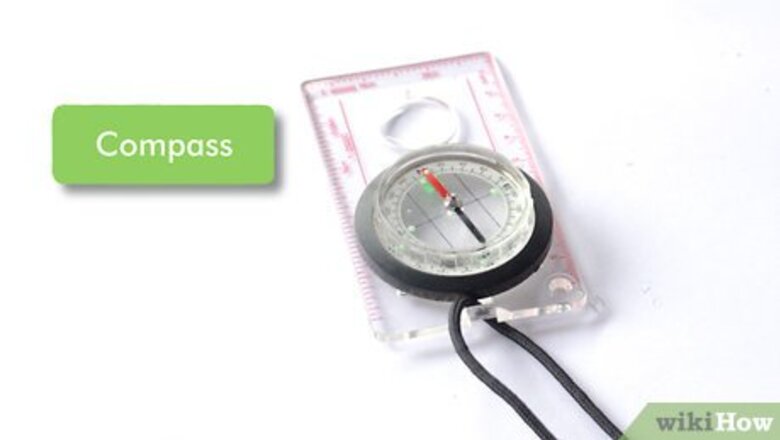
views
Learning the Basics
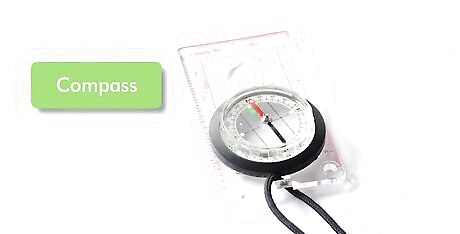
Understand the basic layout of the compass. While the designs of compasses are different, all compasses include a magnetized needle that orients itself to the magnetic fields in the Earth. The basic field compass, also sometimes called a baseplate compass, features the following simple components you should familiarize yourself with as soon as possible: The baseplate is the clear, plastic plate on which the compass is embedded. The direction of travel arrow is the arrow in the baseplate pointing away from the compass. The compass housing is the clear, plastic circle that houses the magnetized compass needle. The degree dial is the twistable dial surrounding the compass housing that displays all 360 degrees of the circle. The magnetic needle is the needle spinning within the compass housing. The orienting arrow is the non-magnetic arrow within the compass housing. The orienting lines are the lines within the compass housing that run parallel to the orienting arrow.
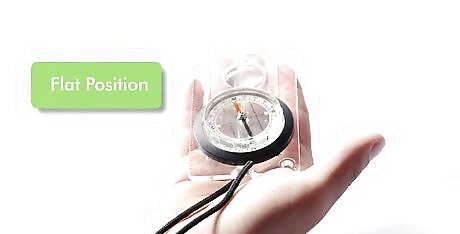
Hold the compass correctly. Place the compass flat on your palm and your palm in front of your chest. This is the proper compass stance, when traveling. If you're consulting a map, place the map on a flat surface and place the compass on the map to get a more accurate reading.
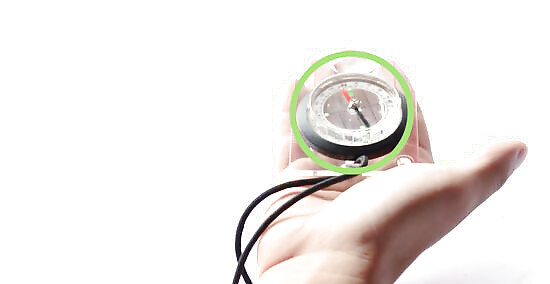
Find out where you're facing. For a quick basic exercise to orient yourself, it's good to find out which direction you're currently facing or traveling. Look at the magnetic needle. It should swing off to one side or another, unless you're facing North. Turn the degree dial until the orienting arrow lines up with the magnetic arrow, pointing them both North, and then find the general direction you're facing by looking at the direction of travel arrow. If the direction of travel arrow is now between the N and the E, say, you're facing Northeast. Find where the direction of travel arrow intersects with the degree dial. To take a more accurate reading, look closely at the degree markers on the compass. If it intersects at 23, you're facing 23 degrees Northeast.
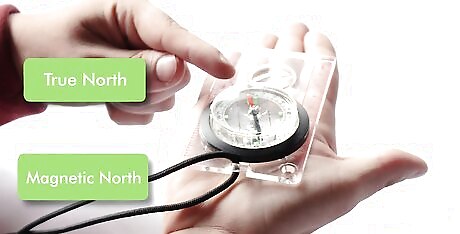
Understand the difference between "true" North and "magnetic" North. While it might seem confusing that there are two kinds of "North," it's a basic distinction that you can learn quickly, and it's an essential piece of information to learn to use a compass properly. True North or Map North refers to the point at which all longitudinal lines meet on the map, at the North Pole. All maps are laid out the same, with True North at the top of the map. Unfortunately, because of slight variations in the magnetic field, your compass won't point to True North, it'll point to Magnetic North. Magnetic North refers to the tilt of the magnetic field, about eleven degrees from the tilt of the Earth's axis, making the difference between True North and Magnetic North different by as many as 20 degrees in some places. Depending where you are on the surface of the Earth, you'll have to account for the Magnetic shift to get an accurate reading. While the difference may seem incidental, traveling just one degree off for the distance of a mile will have you about 100 feet (30.5 m) off track. Think of how off you'll be after ten or twenty miles. It's important to compensate by taking the declination into account.

Learn to correct for declination. Declination refers to the amount by which North on your map and North on your compass differ at any given point, given the Earth's magnetic field. To make using the compass much easier, you can correct for declination by either adding or subtracting the declination amount from your bearing in degrees, depending on whether you're taking a bearing from a map or from your compass, and whether or not you're in an area with East declination or West declination. In the US, the line of zero declination runs up through Alabama, Illinois, and Wisconsin, at a slight diagonal. East of that line, declination orients toward the West, meaning that Magnetic North is several degrees West of True North. West of that line, the opposite is true. Find out the declination in the area in which you'll be traveling so you can compensate for it. Say you take a bearing on your compass in an area with West declination. You'll add the number of degrees necessary to get the correct corresponding bearing on your map. In an area with East declination, you'll subtract.
Using the Compass
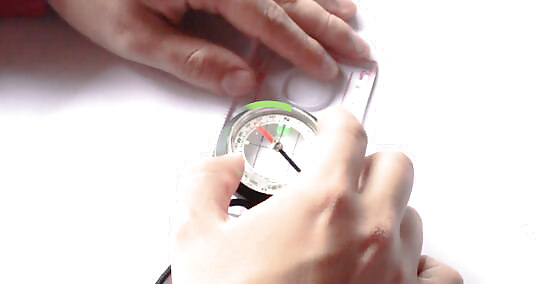
Gather your bearings to find out which direction you're headed. When you're hiking around in the woods or in the field, it's good to periodically check your bearings to make sure you're going in the direction you intend. To do this, move the compass until the direction of travel arrow is pointing in the direction you've been traveling and will continue traveling. Unless you’re heading north, the magnetic needle will spin off to one side. Twist the degree dial until the orienting arrow lines up with the north end of the magnetic needle. Once they're aligned, this will tell you where your direction of travel arrow is pointing. Take off local magnetic variation by twisting the degree dial the correct number of degrees to the left or right, depending on the declination. See where the direction of travel arrow lines up with the degree dial.
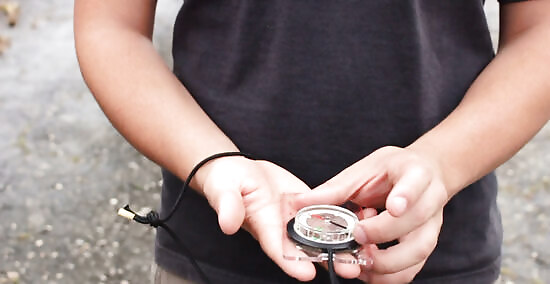
Continue moving in this direction. To do so, simply hold the compass in the proper stance, turn your body until the north end of the magnetic needle once again aligns with the orienting needle, and follow the direction of travel arrow. Check your compass as often as you need to, but be sure not to accidentally twist the degree dial from its current position.
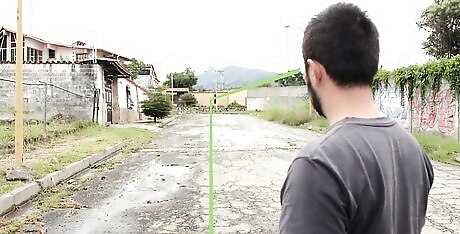
Focus on points in the distance. To accurately follow the direction of travel arrow, look down at the arrow, then focus on a distant object like a tree, telephone pole, or other landmark, and use this as a guide. Don’t focus on anything too distant, like a mountain, as huge objects aren’t precise enough to navigate by accurately. Once you reach each guide point, use your compass to find another. If visibility is limited and you cannot see any distant objects, use another member of your walking party (if applicable). Stand still, then ask them to walk away from you in the direction indicated by the direction of travel arrow. Call out to them to correct their direction as they walk. When they approach the edge of visibility, ask them to wait until you catch up. Repeat as necessary.
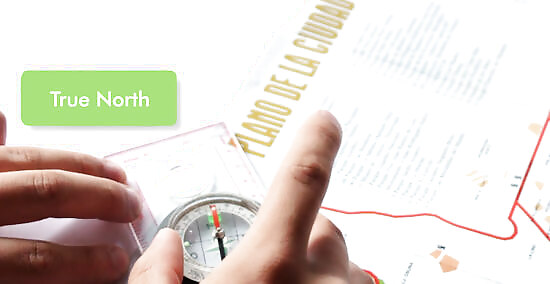
Transpose the direction of travel onto your map. Place your map on a horizontal surface, then place the compass on the map so that the orienting arrow points to true north on the map. If you know your current position on the map, slide your compass around so that its edge passes through your current position, but its orienting arrow continues to point north. Draw a line along the compass edge and through your current position. If you maintain this bearing, your path from your current position will be along the line you just drew on your map.
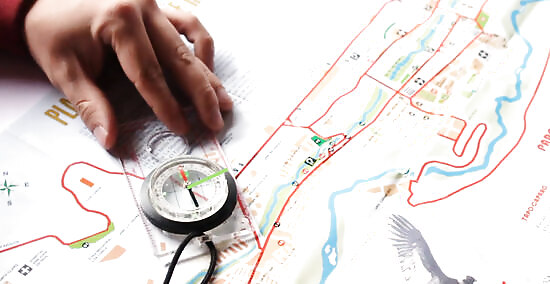
Learn to take a bearing from the map. To find out which direction you need to travel to get somewhere, place the map on a horizontal surface and place your compass on the map. Using the edge of the compass as a ruler, place it so that it creates a line between your current position and where you intend to go. Rotate the degree dial until the orienting arrow points to true north on the map. This will also align the compass’s orienting lines with the map’s north-south lines. Once the degree dial is in place, put the map away. In this case, you'll correct for declination by adding the appropriate number of degrees in areas with West declination, and subtracting in areas with East declination. This is the opposite of what you'll do when first taking your bearing from the compass, making this an important distinction.

Use the new bearing to navigate. Hold the compass horizontally in front of you with the direction of travel arrow pointing away from you. Use this arrow to guide you to your destination. Turn your body until the north end of the magnetic needle is aligned with the orienting needle, and you'll be properly oriented toward the destination on the map.
Finding Your Bearings When Lost
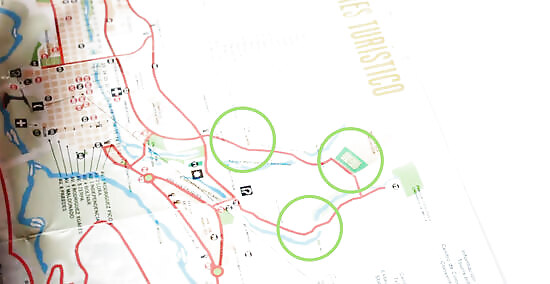
Choose three prominent landmarks that you can both see and find them on your map. One of the most difficult and advanced things you can do with a compass, but one of the most important, is finding out where you are when you don't know your exact location on the map. By locating distinctive landmarks you can see on your map, ideally as widely spread around your field of view as possible, you can get yourself re-oriented.

Aim the direction of travel arrow at the first landmark. Unless the landmark is north of you, the magnetic needle will spin off to one side. Twist the degree dial until the orienting arrow lines up with the north end of the magnetic needle. Once they are aligned, this will tell you where your direction of travel arrow is pointing. Correct for declination, depending on your area.

Transpose the direction of the landmark onto your map. Place your map on a horizontal surface and then place the compass on the map so that the orienting arrow points to true north on the map. Then, slide your compass around so that its edge passes through the landmark on the map, while the orienting arrow continues to point north.
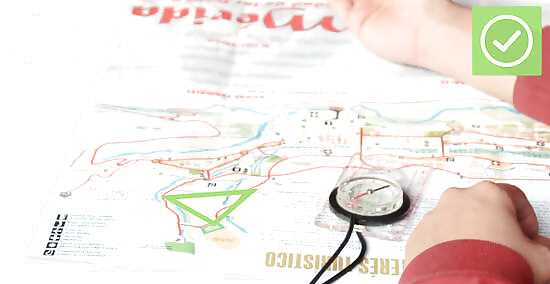
Triangulate your position. Draw a line along the compass' edge and through your approximate position. This is the first of three lines you will draw to find your position by forming a triangle with the other two landmarks. Repeat this process for the other two landmarks. When you’re done, you will have three lines that form a triangle on your map. Your position is inside this triangle, the size of which depends on the accuracy of your bearings. More accurate bearings reduce the size of the triangle and, with lots of practice, you may get the lines to intersect at one point.


















Comments
0 comment